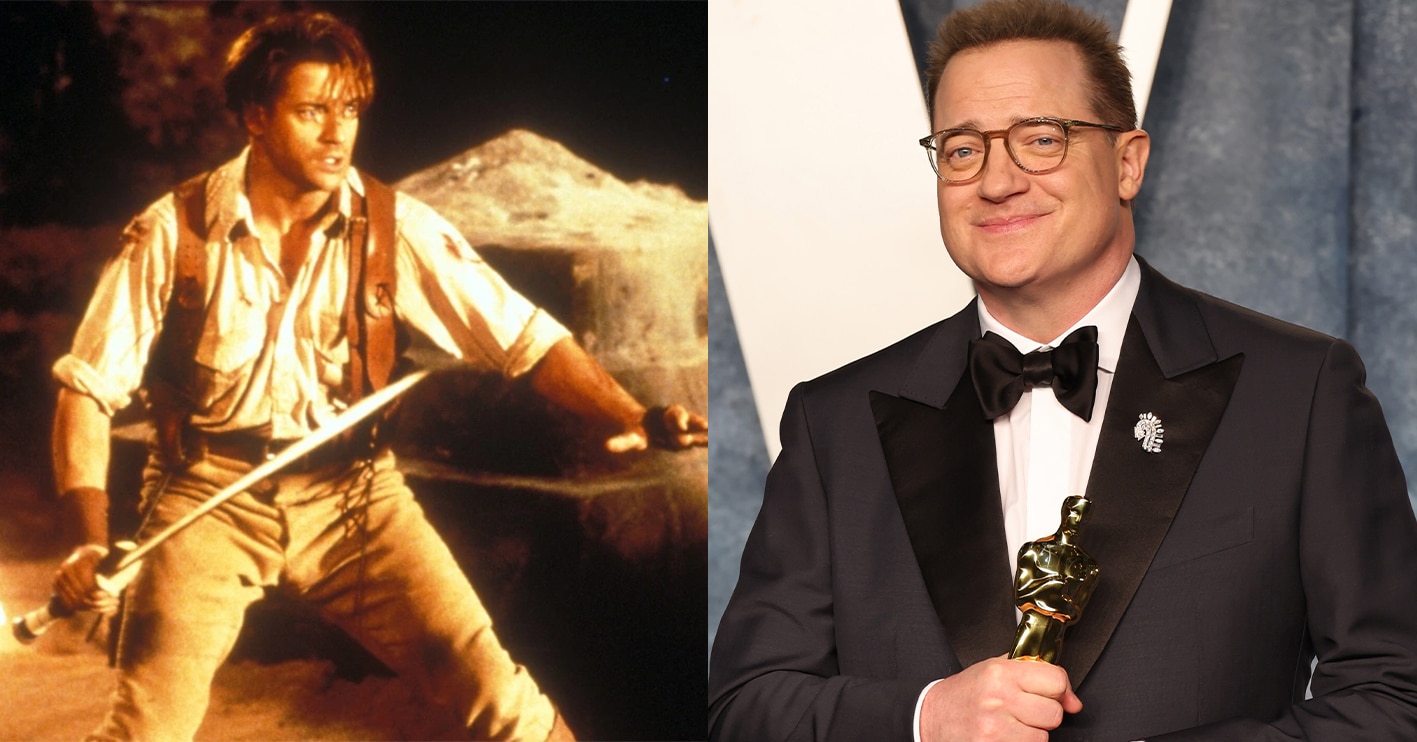1999’s The Mummy was neither the first nor the last film to carry that title – but for anyone who came of age in the 90s, any mention of The Mummy immediately brings to mind images of Brendan Fraser rescuing Rachel Weisz from a digitally-augmented Arnold Vosloo.
A huge action-adventure smash, writer-director Stephen Sommers’ film revived studio Universal’s ailing monster movie property, launched a new franchise, and inspired scores of blockbusters that attempted a similar mesh of adventure, comedy and horror. Did you know the following fascinating facts about the film that started it all?
20. It was originally developed as an R-rated horror

Universal originally had a hit with The Mummy way back in 1932, the success of which resulted in a series of classic Mummy movies with a spooky tone. The studio started developing a reboot in the late 80s, originally envisaging it as an R-rated horror franchise to compete with the likes of A Nightmare on Elm Street and Friday the 13th.
A number of acclaimed horror filmmakers were attached to this Mummy reboot over the years, among them George A Romero, Clive Barker, Joe Dante and Mick Garris, but their takes were all deemed too dark and strange. Eventually, Universal decided to make the project PG-13, and entrusted it to Stephen Sommers (then fresh from Deep Rising).
19. Tom Cruise was offered the lead role, but he passed

For The Mummy’s lead role of Rick O’Connell, reportedly the first actor approached was Tom Cruise. He declined for unknown reasons, leading the character to be passed over to Brendan Fraser, whose portrayal of the down on his luck gunslinger became instantly beloved. It then took almost 20 years for Cruise to get a second chance at the franchise.
Cruise finally led a Mummy movie in 2016, where he was given almost complete control over everything from the script to the character choices made by other actors in the Alex Kurtzman reboot. However, Cruise’s total commitment and perfectionism backfired, with the film flopping badly, and killing all hopes of a Universal interconnected Dark Universe along with it.
18. Brendan Fraser was “choked out” for real shooting the hanging scene

Early on in The Mummy, Rick is sentenced to death by hanging, and is left dangling on the end of a rope when Evelyn, played by Rachel Weisz, successfully negotiates his freedom just in time. Alarmingly, Fraser came close to being hanged for real when the rope was pulled a little too tight, resulting in him falling into unconsciousness.
Fraser later recalled in an interview: “I remember seeing the camera start to pan around, and then it was like a black iris at the end of a silent film. I regained consciousness, and one of the EMTs was saying my name.” Fraser actually stopped breathing and had to be resuscitated, which Rachel Weisz later admitted was traumatising to witness.
17. CGI had to be used to preserve Rachel Weisz’ modesty when her white dress got wet
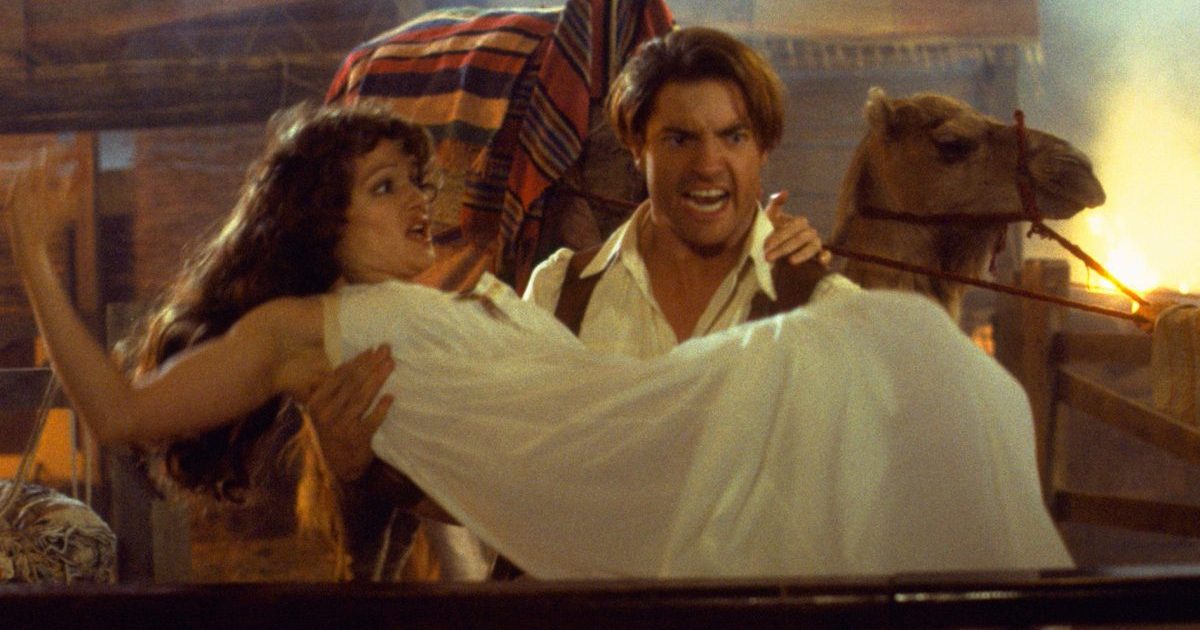
The Mummy features extensive use of CGI, particularly when it comes to the resurrected Imhotep, plagues of locusts and undead priest zombies. However, digital trickery was also used for another purpose outside of creating monsters and insects that you might not have been aware of: concealing the accidental exposure of leading lady Rachel Weisz.
In the scene where they are forced to jump overboard from a boat, Weisz is clad in a dainty white nightdress, in keeping with her character and the time period. Of course, when this garment got wet it became completely see-through. To keep things family-friendly, CGI was used in post to make the dress fully white again.
16. Fraser had a near-miss with a deadly snake on set in Morocco

Most of The Mummy’s desert scenes were shot on location in Morocco, which presented the cast and crew with numerous challenges, ranging from sandstorms, the threat of kidnapping (insurance was taken out on all the central cast members) and the local wildlife, including scorpions and snakes. Fraser recalls a close encounter with such a creature:
“They sent a memo out describing a type of snake… [with] yellow dots on it. They said, ‘If you see this kind of snake, do not go near it. Because if it bites you, at best, they’ll amputate your limb.’ Anyway, there I was, p***ing down a rock, and I look down and there’s the yellow-dot snake. I was like, “F***!” I just ran for it.”
15. The Medjai were going to be tattooed head to toe, but the director decided it would be a waste to cover up Oded Fehr’s good looks
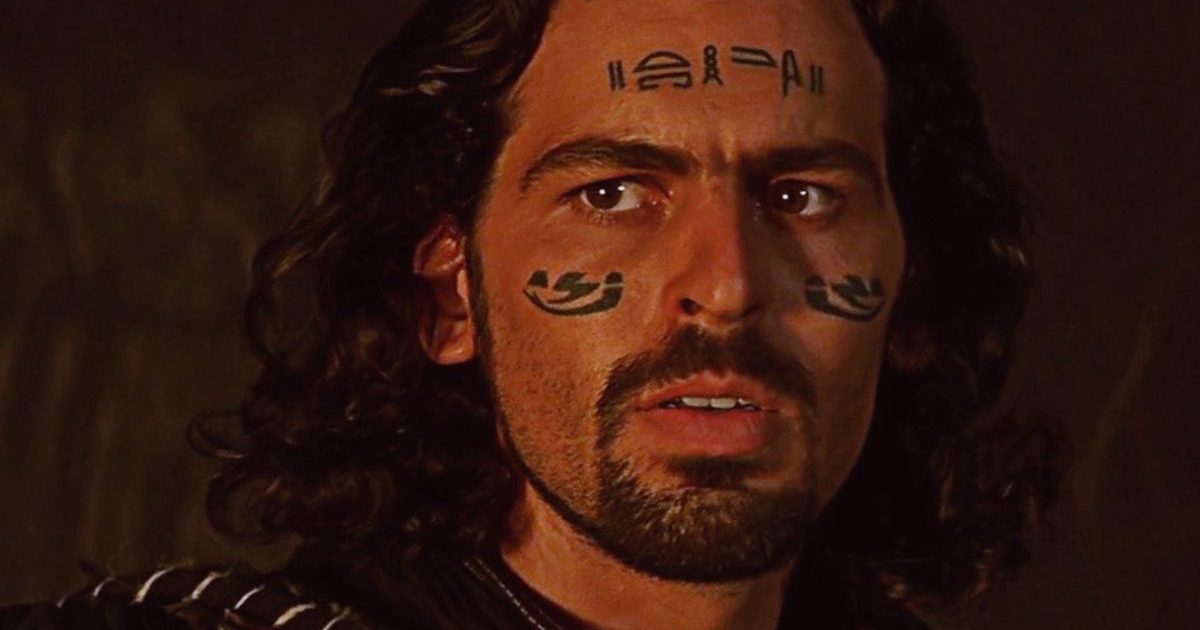
Oded Fehr co-stars in The Mummy as Ardeth Bay, a warrior of the Medjai, an ancient brotherhood devoted to keeping Imhotep imprisoned. Incidentally, Ardeth Bay shares his name, although nothing else, with the character played by Boris Karloff in the original Mummy movie from 1932. However, Bay’s look changed dramatically from the storyboarding stage to the first day of shooting.
Originally, the idea was for the Medjai to be completely covered in tattoos from head to toe, but this plan changed when Fehr was cast. Stephen Sommers felt that the actor was so handsome, it would have been a waste to completely cover his face, and so the tattoos were scaled back to specific hieroglyphs, such as ones spelling out ‘underworld’ on his forehead.
14. Fraser had to get the choreography perfect for his fights with the CGI mummies
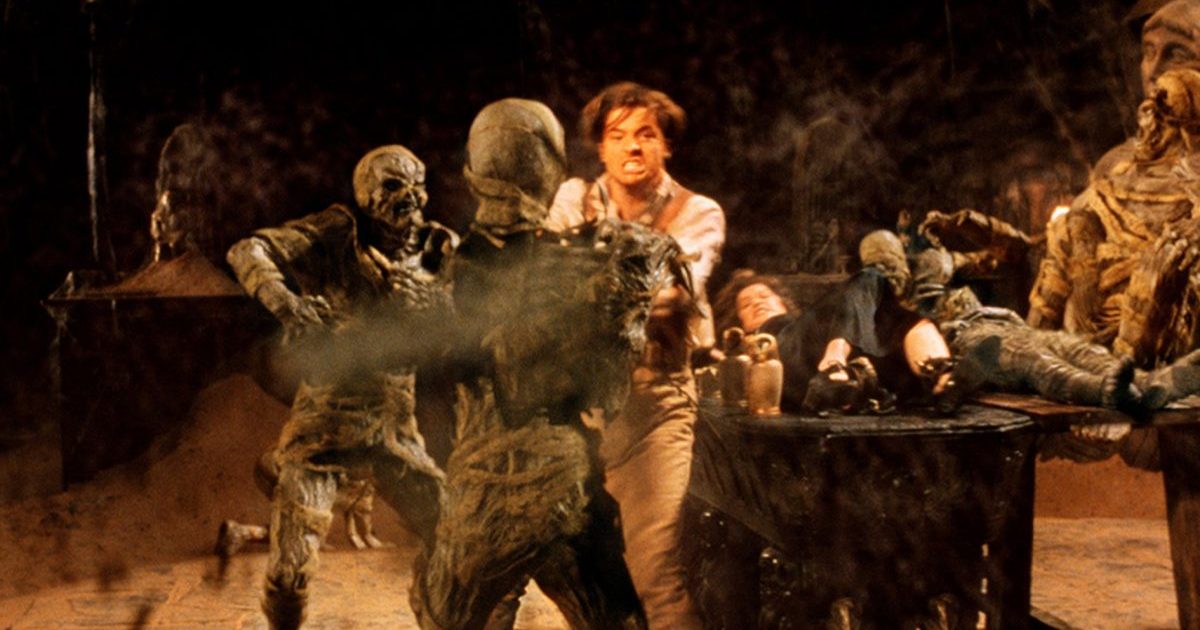
As a large scale action-adventure with heavy supernatural elements, The Mummy was a huge undertaking in terms of stunts and special effects. The cast frequently had to react to creatures and phenomena that were not actually there on the set, and which would be added digitally afterwards. This included a lot of the mummies with which Fraser did battle.
Fraser recalls that performing his fight moves for the high-tech motion-capture camera was a real challenge, as it wasn’t as if he could improvise and have the mummies added in afterwards. Instead, Fraser had to hit every beat perfectly, later saying: “It was programmed, and you couldn’t mess up a move or improvise anything because then the camera wouldn’t capture what you did.”
13. Evelyn’s library accident was shot in one take
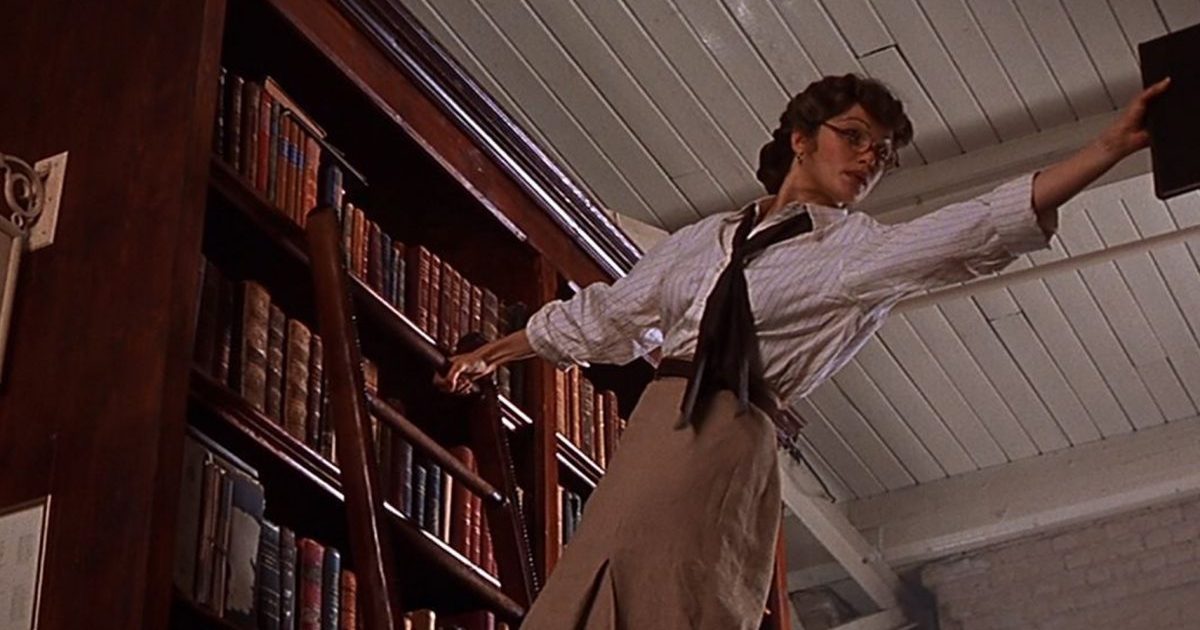
Rachel Weisz’ memorable introduction as Evelyn Carnahan sees the over-zealous librarian struggling through her day job, inadvertently falling on her ladder and setting off a domino effect that topples every bookcase in the room. While a lot of the action in The Mummy is CGI, this particular scene was done entirely live in-camera, by Weisz herself.
Happily, director Stephen Sommers got the shot perfect on the very first take, with all of the falling bookshelves collapsing without a hitch. This must have been an immense relief to all involved, as shooting it a second time would have meant spending almost a whole day putting the library back together, simply in order to have a second shot at knocking it down.
12. Arnold Vosloo had to be shaved all over twice a day
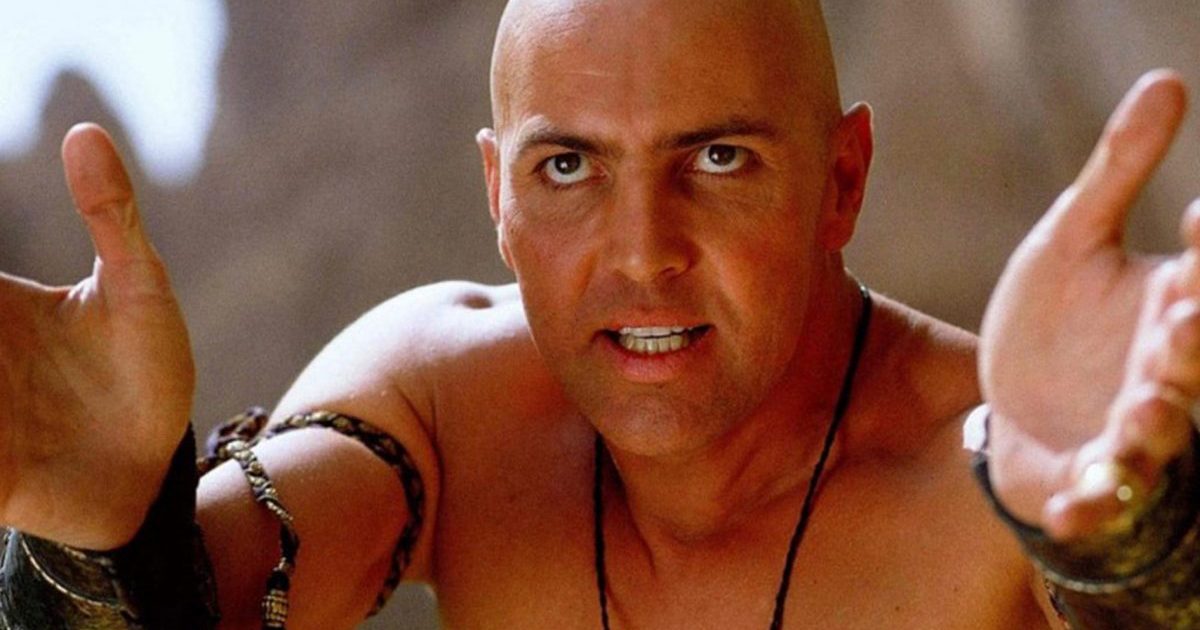
Arnold Vosloo was offered the role of Imhotep by producer James Jacks, the two men having previously worked together on Hard Target. In contrast to that earlier film, The Mummy required Vosloo to spend almost all of his screen time largely naked – and, on top of requiring serious gym time on the actor’s part, other beauty treatments were required.
To maintain Imhotep’s smooth head and body, Vosloo needed to be entirely hairless. The actor baulked at the idea of full body waxing, apparently having had his chest waxed once before and insisting on it never happening again, and so another strategy had to be employed. The make-up team resorted to shaving Vosloo’s whole body twice a day, something that took more time than you might expect.
11. The Mummy was such a big hit that the studio ordered a sequel the morning after it came out
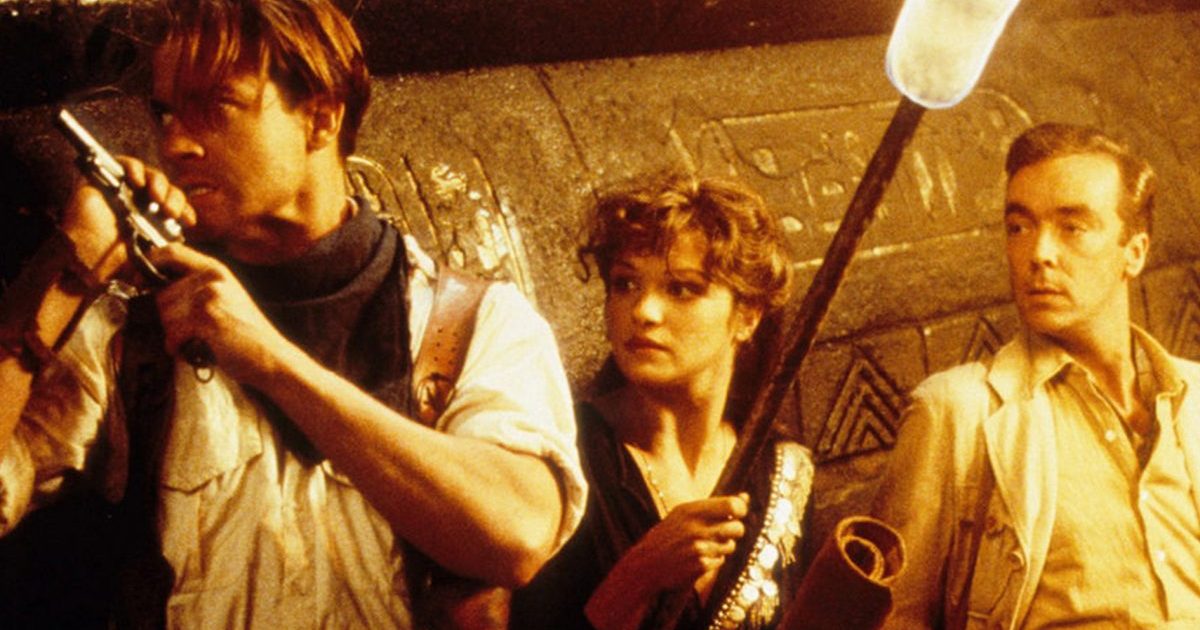
Universal had high hopes that The Mummy would prove a success, and they were not disappointed. The movie was a huge hit, grossing $43 million in its opening weekend, the highest non-holiday May opening of all time. The film earned enough money and generated enough positive word of mouth on its opening day that studio executives ordered a sequel the very next morning.
By the end of its theatrical run, The Mummy had grossed $416.4 million, despite coming out just a couple of weeks before The Phantom Menace. The Mummy Returns was a similarly big hit in 2001, and the spin-off movie The Scorpion King followed in 2002. It even became the year’s second-best-selling DVD, after The Matrix, as families began to watch it over and over on home video.
10. All the gunfire is CGI

Shooting The Mummy in Morocco came with a lot of upsides: the cast could dress in their explorer gear without drawing much attention from the locals; they got to shoot at amazing locations that helped them really buy into the atmosphere of the movie; and they had the full support and protection of the Moroccan military.
However, shooting in Morroco also had one major downside: sand. The sand was omnipresent, and it caused all sorts of problems on set, in particular jamming all of the prop guns by getting into the firing mechanism of each weapon. As a result, all of the gunfire sounds and flashes from scenes set outside had to be added in post, as the guns completely failed to fire after just one day of shooting outdoors.
9. Leonardo DiCaprio came very close to playing Rick
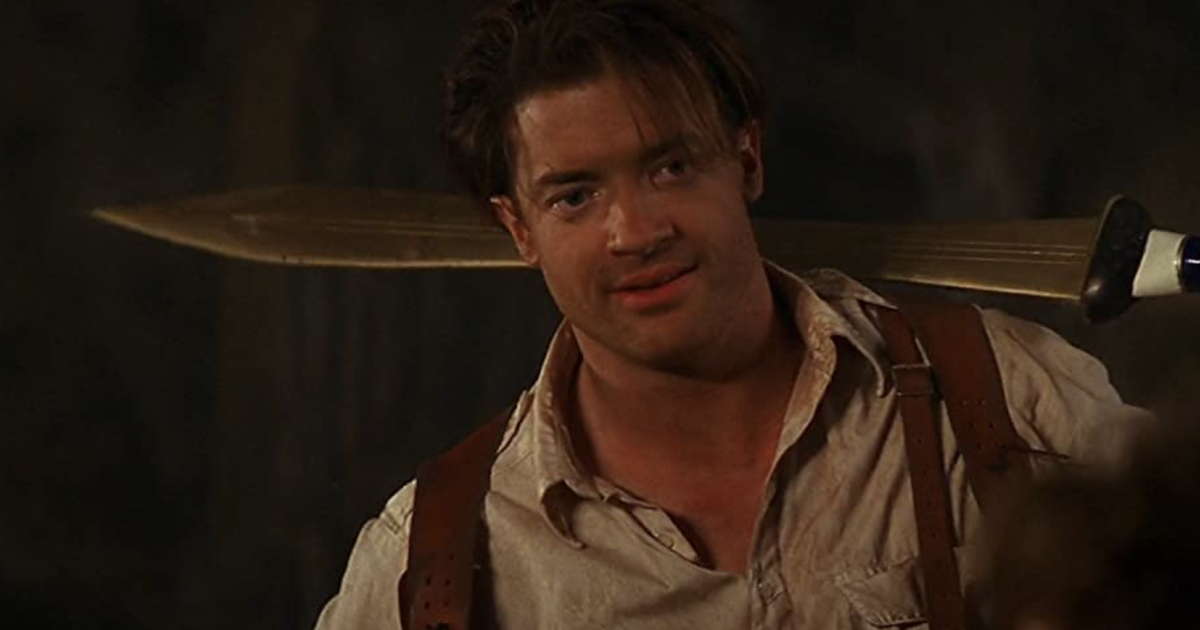
It’s hard to imagine anyone other than Brendan Fraser portraying Rick, the character’s mix of swashbuckling charm and goofy clumsiness being the actor’s speciality at that time (following the likes of George of the Jungle and Encino Man). However, Fraser was not a lock for the part until late in pre-production, with almost every leading man in Hollywood attached to the role early on.
As well as Tom Cruise, the casting team also considered Brad Pitt, Ben Affleck, Matthew McConaughey and Sylvester Stallone. However, it was Leonardo DiCaprio that stuck around the longest, riding high off the success of Titanic and looking for another period movie to star in. DiCaprio eventually had to decline The Mummy because he’d already committed to Danny Boyle’s movie The Beach, but he was so eager to play Rick that he even asked Boyle if the shoot for The Beach could be delayed.
8. The locusts were real

A lot of CGI bugs had to be inserted into The Mummy, which isn’t surprising given a literal plague is unleashed by Imhotep over the course of the movie. However, while Arnold Vosloo didn’t really unleash a torrent of insects from his mouth, many of the other creepy crawlies we see in the film are real, and the critters wreaked havoc with the cast’s performances.
In particular Jonathan Hyde, who plays Dr Chamberlain in the film, really struggled to keep it together when the bugs were involved. Scenes where the beetles had to crawl on his face, neck and head took twice as long to film, as Hyde would be unable to stop from shuddering and laughing as soon as the creatures made contact with his skin.
7. The cast were at constant risk of dehydration
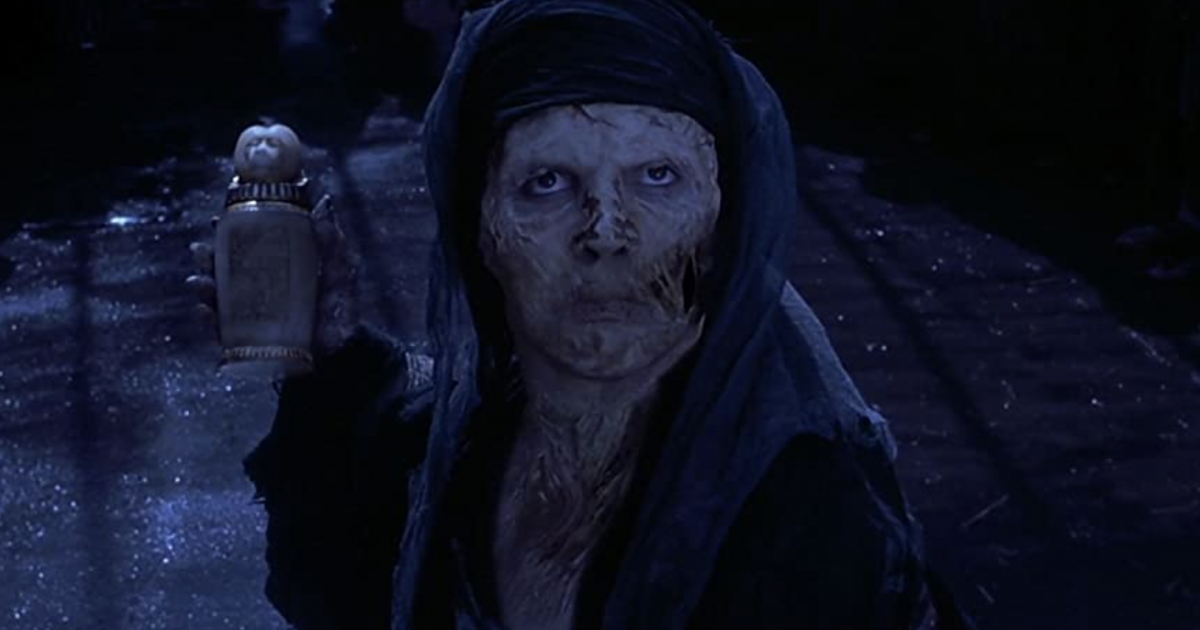
Acting might be an aspirational profession, but it’s not all glitz and glam. Long shoot days means a lot of time waiting around, eating snacks from the craft table and getting make-up touched up – all of which can be boring, physically draining and not super comfortable. The normal amount of strain involved in a production gets even worse, however, when extreme conditions are introduced.
Many of the cast who worked on The Mummy found it to be an ordeal. The constant heat was the biggest issue, with it not being uncommon for cast or crew members to pass out whilst waiting around on set. The issue was so prevalent that the on set doctors developed an unpleasant bitter drink that hydrated people twice as fast as water, and insisted everyone drink it every two hours without fail.
6. The film shot inside of a dormant volcano

For political and logistical reasons, The Mummy couldn’t be shot in Egypt where the majority of the action takes place. However, the production still found some exciting locations in which to bring the story to life – including a volcano. The ancient city of Hamunaptra was recreated practically in a dormant Moroccan volcano, rather than a soundstage.
The large practical set allowed the cast way more freedom to improvise and utilise the space than they had during other sequences, which were mostly filmed on smaller soundstages. The downside was the volcanic setting also came with the possibility that it could become active at any moment, which would probably distract even the most dedicated actor.
5. Kevin J O’Connor had to ice his nipples after the Egyptologist scene
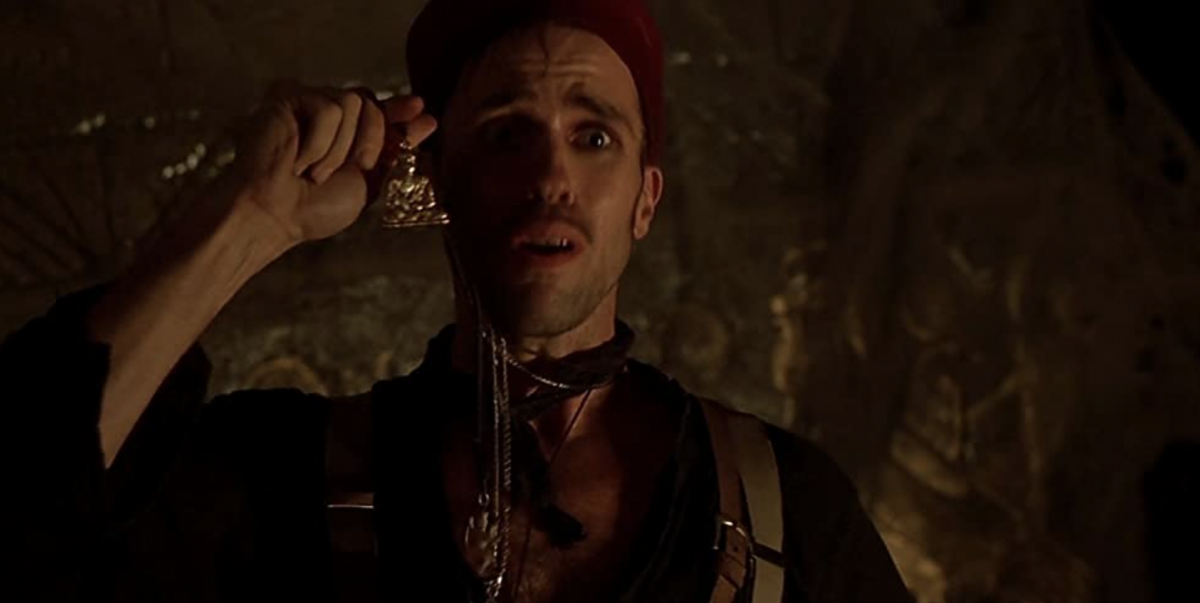
Kevin J. O’Conner had a pretty rough time on the set of The Mummy. As well as shouldering all the difficulties that the rest of the cast had to deal with like the intense heat, dehydration risk and constant bug bites, O’Connor also had to deal with a set of problems that were his and his alone. In particular, his nipples really suffered throughout production.
While shooting the scene where Beni is roughed up in the Egyptologist’s office, O’Connor found himself sustaining some serious damage. After the scene was completed, O’Connor had to spend some time recovering, in particular icing his nipples, which had been bruised almost to the point of bleeding. Not exactly the glamorous Hollywood experience you might expect.
4. All the cast had kidnapping insurance
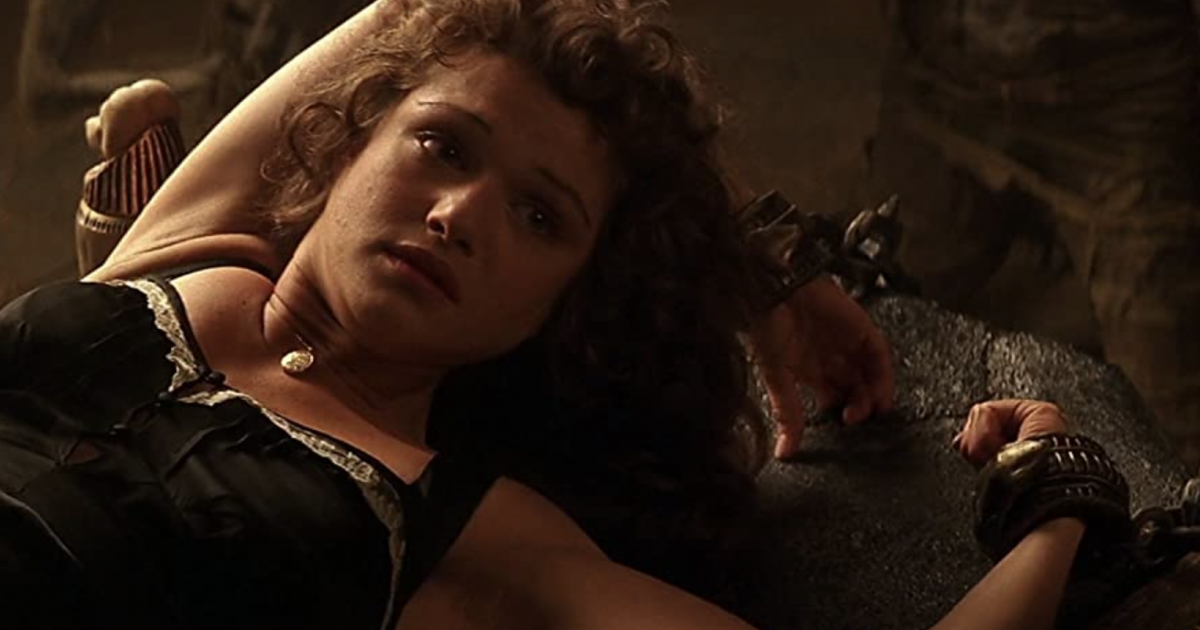
Though The Mummy takes place in Egypt, none of the movie was actually shot there, due to the unstable political climate at the time making it dangerous and less financially viable. Early on in the production, the whole shoot was moved to Morocco, but that choice came with its own set of dangers for the cast and crew to contend with.
Although the production had the full support of the Moroccan military, there remained risks that just could not be fully eliminated. As a result, director Stephen Sommers felt it necessary to take out kidnapping insurance on all the main cast. In a hilarious or upsetting twist (depending on how you look at it), Sommers didn’t reveal to the cast that the kidnapping insurance had been taken out until after the shoot was finished.
3. Evelyn was based on a real woman

An intelligent but under-utilised librarian who is the daughter of a “very, very famous explorer”, and someone who longs to break out of her ordinary life and have a real adventure of her own, Evelyn is the kind of stock leading lady who pops up over and over again in adventure films. However, the character is set apart by the fact that she was actually based on a real woman.
Not many real-life details made it into the final film, but Evelyn was originally inspired by Lady Evelyn Beauchamp, the daughter of the 5th Earl of Carnarvon. The real Evelyn was actually present for the discovery of Tutankhamen’s tomb in 1922 and had a boundless enthusiasm for exploring. The real Evelyn didn’t have Rachel Weisz’ aggressively 90s eyebrows, however.
2. The camels really hated Kevin J O’Connor

Out of all the characters in The Mummy, Beni is maybe the most pathetic. Even whilst allied with the good guys like Rick, he can’t help but be bumbling and cowardly, and it’s not long before he betrays the heroes in order to guarantee his own personal safety from Imhotep. Maybe worst of all, Beni just can’t get along with animals.
Not only does he eventually get eaten by scarab beetles, but when he attempts to escape unscathed with his treasure, the camels that Beni has lashed his gold to refuse to co-operate. This wasn’t actually a character decision but something that arose naturally when it became clear that Kevin J O’Connor really couldn’t get along with the animals, as “every camel” on set apparently hated him.
1. The real Imhotep wasn’t a villain

There’s no denying that Imhotep is a scary guy. Even when you take away all the elements that are totally fictional, like his ability to walk around whilst technically undead and decaying, and his command over his supernatural mummified priests, the intensity of his obsession with Anck-Su-Namun and his determination to complete his plan make Imhotep a formidable foe.
However, the real Imhotep was neither dangerous nor hated. Rather than being the High Priest of Pharaoh Seti I, he was a hugely respected physician and architect, who developed the first pyramids in Ancient Egypt. Imhotep’s intelligence was such that he was even rumoured to be descended from the gods, and his name meant “one who comes in peace”.

